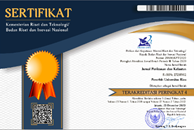IDENTIFIKASI DAN ANALISIS ISI LAMBUNG IKAN-IKAN YANG TERTANGKAP DI SEKITAR KARAMBA DI WADUK KOTO PANJANG, KABUPATEN KAMPAR, PROVINSI RIAU
(1)
(2)
(*) Corresponding Author
Abstract
A study on gut content analysis of fish species that are captured around thefloating caged fish culture area in the Koto Panjang Dam, Kampar, Riau Provincehas been conducted on June to September 2007. Aims of this research are tounderstand the type of fishes present around the cages, their food types and alsotheir role in reducing the amount of organic materials originated from fish cultureactivities. Fish samples were caught by scoop nets and fishing lines and gutcontent was analysis using a volumetric method. Results shown that 9 fishesspecies namely goramy (Osphronemus gouramy ), tambakan (Helostomatemincki) , kapiek (Puntius schwanefeldi), paweh (Osteochilus hasselti), commoncarp (Cyprinus carpio ), sipaku (Cyclocheleichthys apogon), nile tilapia(Oreochromis niloticus), ingir-ingir (Macrones nigriceps) and baung (Macronesnemurus) are able to eat pellets and fish remains that may present around thecages. Other species, such as belida (Notopterus notopterus), toman(Ophiocephalus micropeltes), gabus (Ophiocephalus striatus) and tapah (Wallagoleeri), prey on fish and shrimp only. The stomach of another fish species captured,namely katung fish (Pristolepis grotii), however, full of algae. Based on the dataof stomach content, it can be concluded that fish that have ability in eating pelletremains present around the cages may have important role in reducing the amountof organic materials originated from floating cages aquaculture.
Article Metrics
Abstract view : 302 timesDOI: http://dx.doi.org/10.31258/jpk.14.02.%25p
Copyright (c)
Gedung Marine Center Lt 2. Fakultas Perikanan dan Kelautan Universitas Riau



